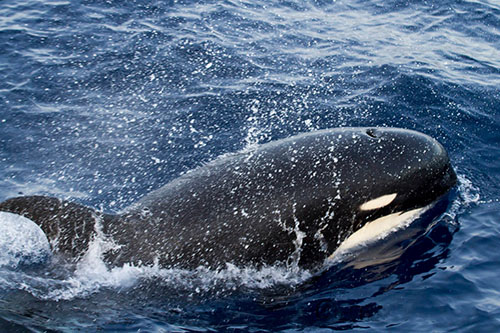— from ScienceAlert.com —

An elusive type of orca, rarely heard of and even more rarely seen, may have just been spotted in the wild.
In the icy waters off Cape Horn on the southern tip of Chile, scientists have filmed an entire pod of the legendary “Type D” orca.
Over the years, evidence of Type D has been sporadically collected. Tourist photographs. Fisherman tales. One mass stranding on Paraparaumu Beach in New Zealand in 1955. These sightings formed the basis of a 2010 paperdescribing this distinct group.
Just a few years ago, in 2015, researchers obtained the first known video footage of the orcas.
But now we’re homing in. Scientists from the US National Oceanic and Atmospheric Administration (NOAA) aboard the research vessel Australis got close enough to the orcas to take three tissue samples.
Tissue and tooth samples were taken from the 1955 stranding, preserved, and finally analysed in 2013. They showed that Type D is genetically distinct from the other three known orca types, and that it diverged from other orcas around 390,000 years ago.
If the tissue samples from the Cape Horn orcas match the Paraparaumu Beach orca samples, we might finally learn more about these mysterious animals.
“Type D killer whales could be the largest undescribed animal left on the planet and a clear indication of how little we know about life in our oceans.”
READ FULL ARTICLE: www.sciencealert.com/scientists-think-they-have-spotted-a-mysterious-legendary-orca-species
**If you are reading theOrcasonian for free, thank your fellow islanders. If you would like to support theOrcasonian CLICK HERE to set your modestly-priced, voluntary subscription. Otherwise, no worries; we’re happy to share with you.**







